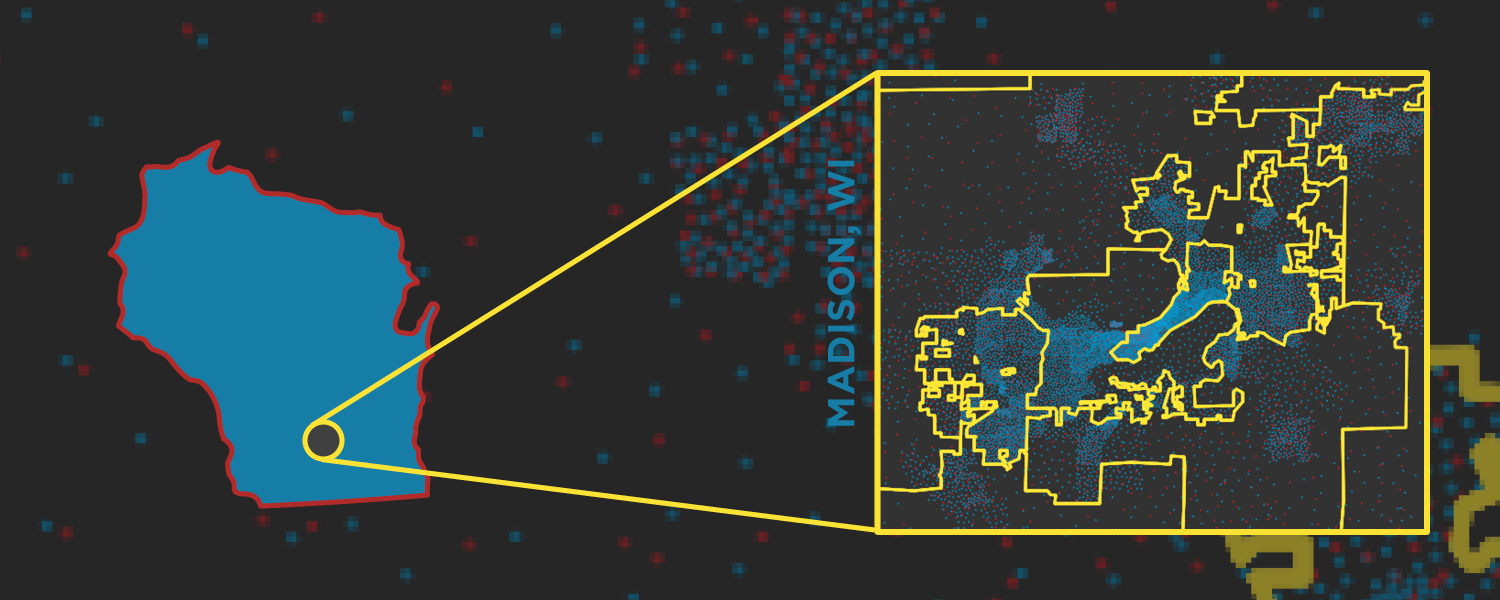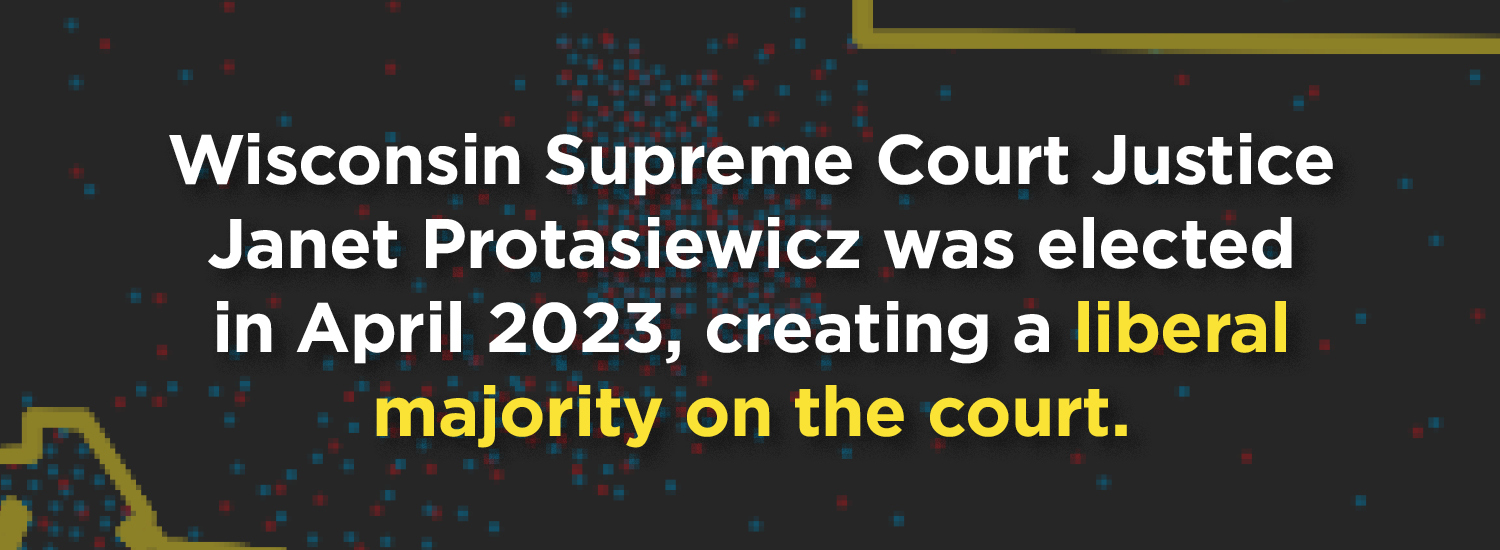
In February, Wisconsin Governor Tony Evers approved new state legislative district maps, setting the stage for 2024 to be the fairest election in over a decade in a state long considered one of the most gerrymandered in the country.
Since 2011, a conservative-leaning Wisconsin Supreme Court had allowed Republicans to rig state legislative maps with impunity. Despite Democrats consistently winning the statewide popular vote, Republicans were able to hold a majority of seats in the legislature – at times, even a supermajority. Take 2012, when Democrats won two statewide elections and a clear popular majority yet could only secure 39 out of 99 seats in the Assembly. Or 2018, when Democratic candidates for the state Assembly won 53% of the total votes cast but only took control of 36% of the seats.
In theory, redistricting is a straightforward exercise – done every ten years after the census – that follows three core principles: each district is supposed to be contiguous, not reduce the voting power of people of color, and have an equal number of people – not just voters. One look at the map Wisconsin Republicans drew in 2011 clearly shows how they flouted these standards and held onto power through gerrymandering.
A couple of underhanded practices have been used to gerrymander voting districts in Wisconsin. The first tactic is packing. That’s where the GOP takes a heavily Democratic city like Milwaukee and tries to pack the city’s voters into a few districts where 80-90% of people vote blue. The second tactic is called cracking – which Republicans also employed in Milwaukee, Green Bay, and Madison – dividing the city into multiple districts shaped like strips that extend far out into the suburbs, exurbs, and even rural areas. This dilutes urban Democratic votes, so they can’t get a high enough vote share to win a district.

Wisconsin Republicans used their control of the redistricting process to make an undemocratic power grab, in turn blocking progress on a wide range of issues from workers’ rights to reproductive freedom. In 2011, then-Governor Scott Walker brought national attention to his state by signing the highly controversial Act 10 into law, effectively knee-capping public sector unions and targeting teachers in particular. Walker’s administration took advantage of Republican legislative control to usher in a kind of right-wing extremism from which Wisconsin is still recovering. In a final blow to democracy, as he left office in 2019, Walker signed far-reaching lame-duck bills that, among other things, severely limited the power of incoming Democratic Governor Tony Evers.
When Governor Evers took office, Wisconsin Republicans immediately sandbagged a special session he called to discuss common-sense gun control measures like red-flag laws and universal background checks. And they’ve kept up their opposition to popular policies.
Since the Supreme Court overturned Roe v. Wade in 2022, Wisconsin Republicans have rejected Democratic efforts to repeal an 1849 abortion ban that was passed before women were even allowed to vote. They’ve also blocked popular proposals to create a paid family leave program and legalize cannabis, among so much more. This year shows no signs of Wisconsin Republicans changing their ways. They’ve already passed a deceitfully named “parental rights” bill attacking LGBTQ+ students and preventing teachers from discussing subjects such as identity and racism. They also passed a bill to set a statewide referendum for a new 14-week abortion ban, as the 1849 ban stalls in the court.

When new maps were drawn by the Republican legislative majority after the 2020 census, many feared the cycle of disenfranchisement would begin again, with the right-leaning state Supreme Court signing off on the GOP’s zigzag, nonsensical borders. But in April 2023, voters elected Justice Janet Protasiewicz to fill a vacant seat on the Wisconsin Supreme Court, establishing a new liberal majority and giving supporters of democracy an opportunity to fight back. When the Court heard the case of the gerrymandered maps in November 2023, they found that the districts were, in fact, not contiguous, in violation of the state constitution.
Now these new maps, recently signed by Governor Evers, represent an opportunity for Democrats to gain ground in Wisconsin this November. While we still have more work to do to ensure fair representation in every Wisconsin community, these new maps give us an opportunity to roll back the Republican takeover, especially with the full Assembly and half the Senate on the ballot this fall.
Wisconsin is part of the DLCC’s target map for building Democratic power in 2024. We’ve already invested an early $48,000 to help recruit candidates, hire campaign staff, build out digital fundraising infrastructure, and mobilize field operations.
This is the most important year in state legislative campaign history, and we are laser-focused on channeling our resources in Wisconsin. Democratic candidates need early, consistent, and strong support to build sustainable winning campaigns. Early investments are often what make or break a race.

